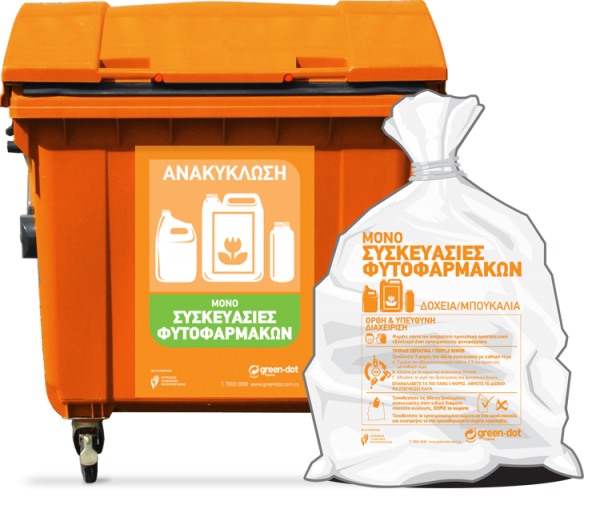
Pesticide packaging are described as hazardous waste because of their content. However, if the necessary instructions are followed, the hazardous description can be lifted and it can be managed in the same way as other packaging.
Green Dot Cyprus in cooperation with the Cyprus Crop Protection Association, the European Crop Protection Association and the Greek Crop Protection Association have undertaken the task of collecting and managing pesticide packaging from all the districts of Cyprus.
Pesticide packaging is collected by using special bins of orange colour which are placed in a large number of stores throughout Cyprus where pesticides are sold.
Information Procedure
Managers of Stores where the specific bins have been placed should inform farmers about the collection procedure in place and hand them 1 empty bag each so that they may gather their empty packaging and return them to the selected sites.
Instructions to the farmers:
The triple rinsing out has shown in relative tests that it removes 99.9% of the product from the container and this justifies the inclusion of pesticide empty containers in the non-toxic waste.
The triple rinsing out of the empty packaging as well as their handing over to the sales stores, apart from helping to maintain the agricultural premises of the producer free of plastic waste, is at the same time the obligation of every producer within the framework of the program of proper farming policy implemented by the Ministry of Agriculture.